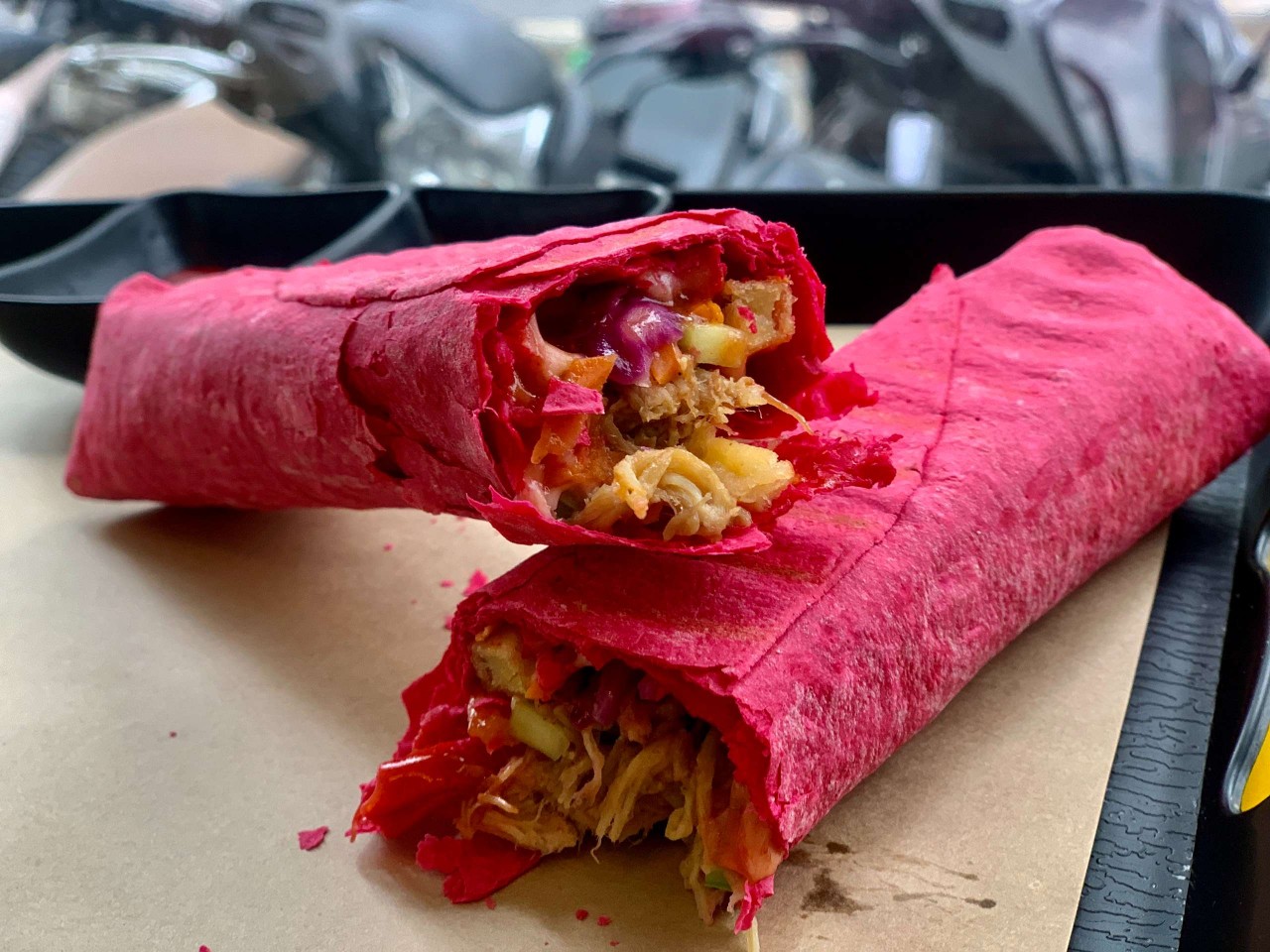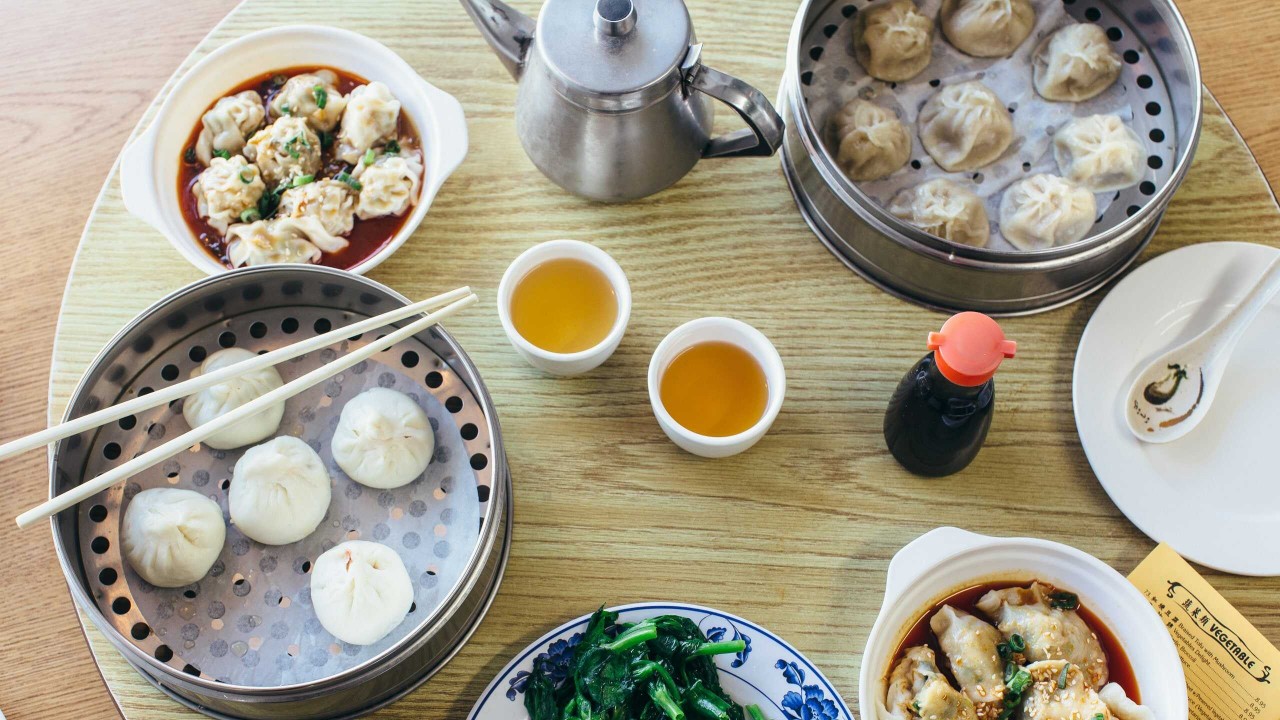The Most Delicious And Cozy Winter Snacks You Can Try In Korea
Korean cuisine has evolved through centuries of social and political change. Originating from ancient agricultural and nomadic traditions in Korea and southern Manchuria, Korean cuisine reflects a complex interaction of the natural environment and different cultural trends.
Korean cuisine is largely based on rice, vegetables, seafood, and (at least in South Korea) meats. Dairy is largely absent from the traditional Korean diet. Traditional Korean meals are named for the number of side dishes (반찬; 飯饌; banchan) that accompany steam-cooked short-grain rice. Kimchi is served at nearly every meal. Commonly used ingredients include sesame oil, doenjang (fermented bean paste), soy sauce, salt, garlic, ginger, gochugaru (pepper flakes), gochujang (fermented red chili paste), and napa cabbage.
Winter time in Korea is when you can taste the best dishes, and warm yourself up with hotpots and soups. When you visit Korea in winter, it is not complete if you did not try Korean street food and snacks that are high in calories, which help you fight the cold weather.
1. Hotteok (호떡) Korean Sweet Pancakes
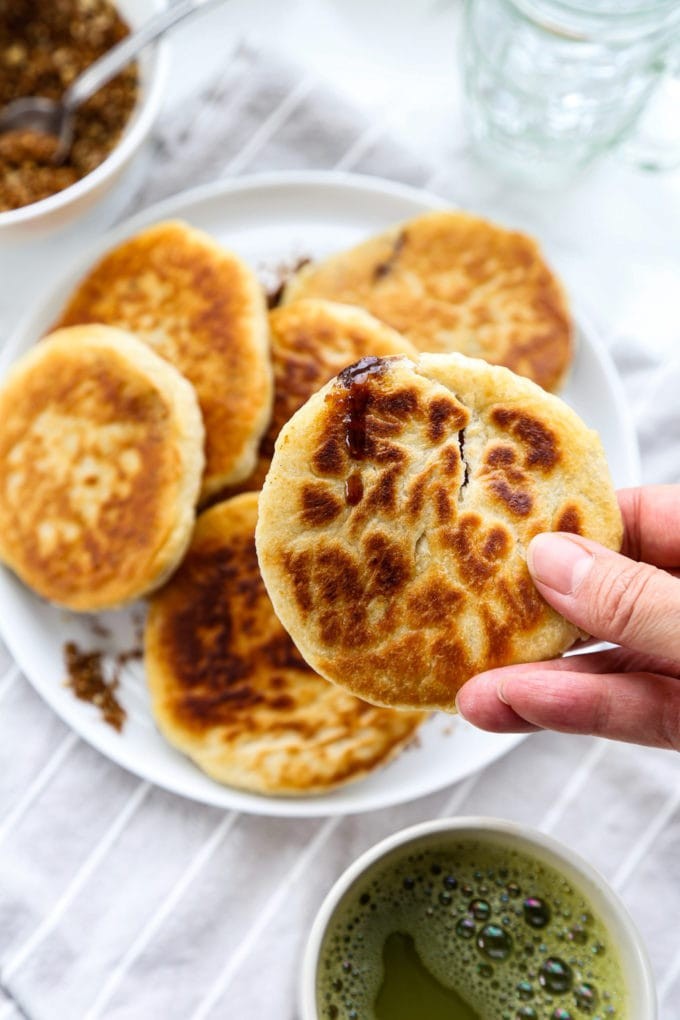 |
| Photo: Pickled Plum |
Hotteok (호떡), sometimes called Hoeddeok, is a type of filled Korean pancake; it is a snack from Korean cuisine and is a popular street food in South Korea. The dough for hotteok is made from wheat flour, water, milk, sugar, and yeast. The dough is allowed to rise for several hours. Handful-sized balls of this stiff dough are filled with a sweet mixture, which may contain brown sugar, honey, chopped peanuts, and cinnamon. The filled dough is then placed on a greased griddle, and pressed flat into a large circle, this is done with a stainless steel circle and wooden handle as it cooks. In South Korea, ready-made dry hotteok mix is commercially available in plastic packages. The mix also comes with a filling consisting of brown sugar and ground peanuts or sesame seeds.
It is generally believed that the Chinese merchants who immigrated to and settled down in Korea around the late 19th century made and sold hotteok at cheap price, so they could make a quick money and move to bigger businesses. Unlike many Chinese pancakes, which often contain savory meat fillings, hotteoks usually have been stuffed with sweet fillings, to suit Koreans' culinary tastes.
The types of hotteok have been changing continuously although many favour the traditional cinnamon and peanut filling. Many variations have developed since the early 21st century, such as green tea hotteok, pink bokbunja hotteok, corn hotteok, pizza hotteok and more. Along with that many vendors now sell yachae-hotteok made with japchae and vegetables. Commercially produced hotteok products are developed and sold by companies such as Samyang, Ottogi, and CJ. Such products are designed to be cooked at home.
2. Bungeo-Ppang (붕어빵) Goldfish Bread
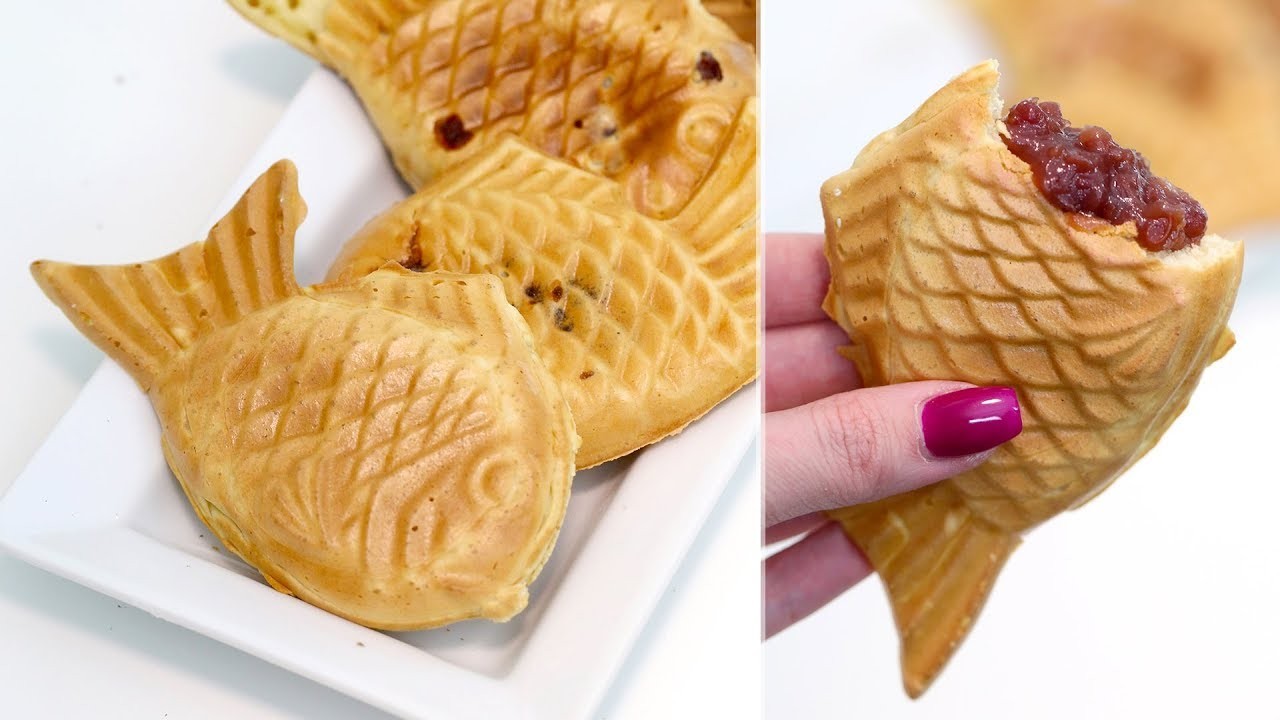 |
| Photo: pankobunny |
Bungeo-ppang (붕어빵; "carp bread") is a fish-shaped pastry stuffed with sweetened red bean paste, which originated from the Japanese taiyaki. One of South Korea's most popular winter street foods, the snack is often sold at street stalls, grilled on an appliance similar to a waffle iron but with a fish-shaped mold. Red bean paste is the standard filling but many bungeo-ppang sold as street food are filled with pastry cream (called "choux-cream" in South Korea), pizza toppings, chocolate and others. Usually, it costs about 1,000 won (KRW) for three bungeo-ppang. However, small bungeo-ppang costs 1,000 won for five and large bungeo-ppang costs 2,000 won for one, indicating that the price range varies depending on the size.
Bungeo-ppang was derived from the Japanese treat, taiyaki (baked sea bream), introduced to Korea around the 1930s when the country was under Japanese rule. According to the 2011 book Bungeoppang Has a Family Tree, bungeo-ppang began as a mix of Western waffles and Eastern dumplings, as the taiyaki itself was a Japanese adaptation of Western waffles introduced to Japan in the 18th century. The change of fish-shaped pastry continued, as the sea bream-shaped taiyaki became carp-shaped bungeo-ppang in Korea. Although bungeo-ppang's popularity did not last long, it found its way back into popularity during the 1990s with the retro craze in South Korea.
Recently, bungeo-ppang has been seeing higher demand, so to provide information on remaining stalls, enthusiasts nationwide created a "bungeoppang map." Through Google Maps, users mark the stalls’ locations with brief reviews, prices and opening hours to share with others.
Bungeo-ppang batter is made of wheat flour, baking powder, water and/or milk, and optionally eggs. The batter is poured into a fish-shaped mold in the bungeo-ppang grill, an appliance similar to a waffle iron. Sweetened red bean paste with bits of broken beans and bean husk is added, and then more batter is poured to encase the paste. The mold is then closed to grill the pastry until it is golden and crispy.
3. Gyeranppang (계란빵) Egg Bread
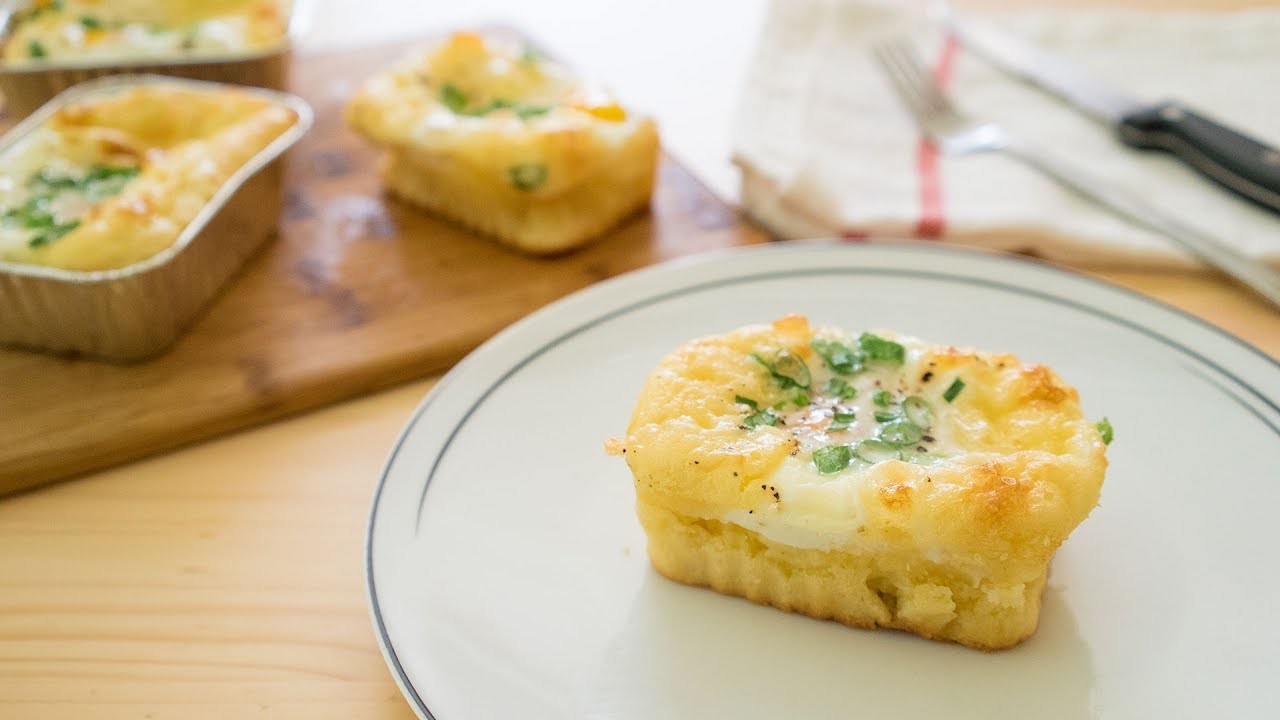 |
| Photo: Make Food. Eat Food |
Gyeran-ppang (계란빵; "egg bread") is a warm street snack sold throughout South Korea. The fluffy, oblong-shaped loaf of bread is sweet and savory with a whole egg inside the pancake dough.
A Gyeran-ppang machine is an appliance with a few dozen oblong slots for pouring cake batter and eggs. The cake mix usually consists of wheat flour, baking powder, milk, eggs, butter, sugar, salt and vanilla extract. A whole egg is cracked onto the batter in each slot, and the egg breads are cooked till golden brown. Common toppings include chopped parsley, cheese, and diced ham.
Cause full of nutrition so eggbread really good to eat in winter to give more energy during winter. It is a very famous snack in Korea so if you are planning to visit, there is a good chance you will meet this one when you are looking for local foods to try!
4. Jjinppang (찐빵) Steamed bread
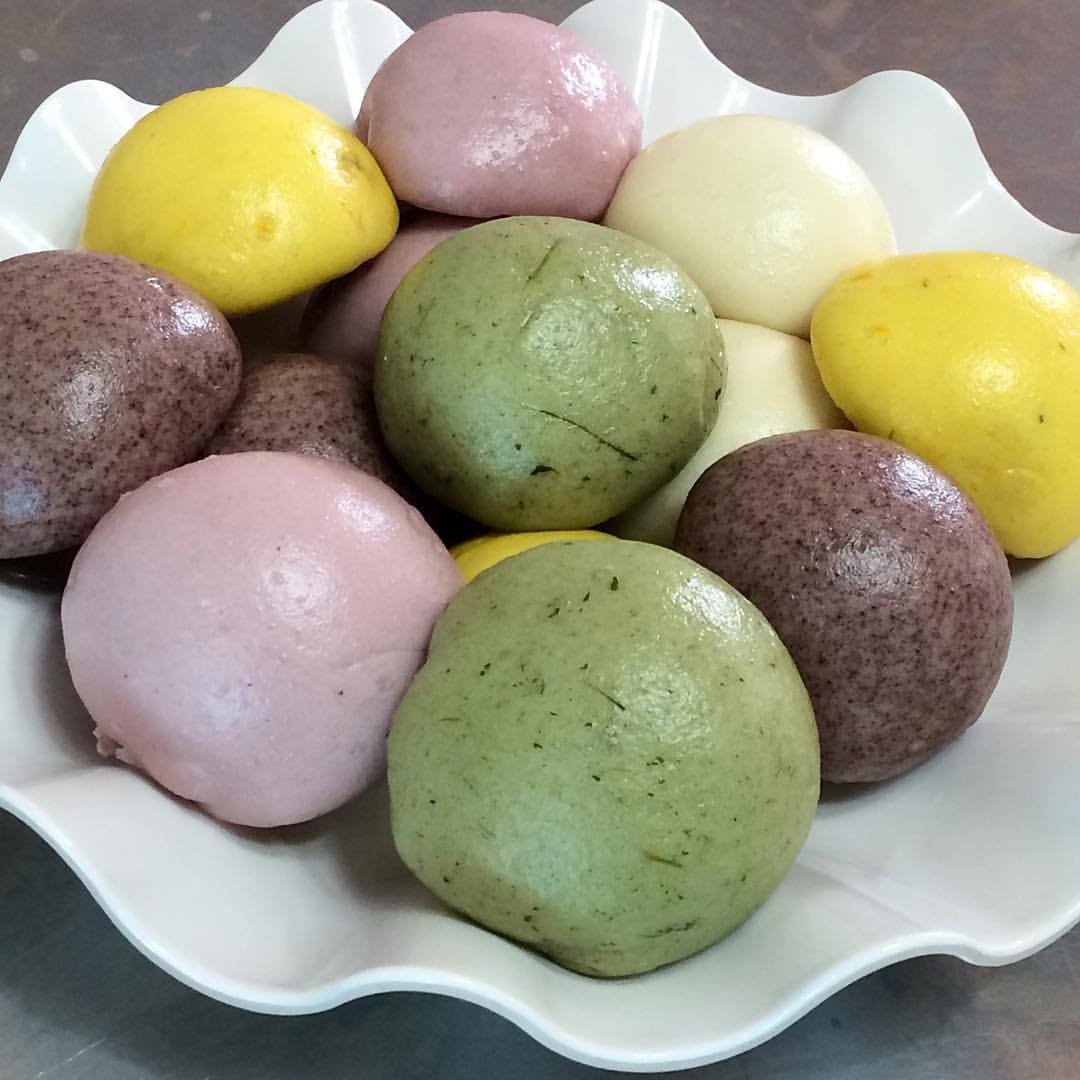 |
| Photo: Soo Hyeong lee - Tumblr |
Jjinppang (찐빵) is a steamed bun, typically filled with red bean paste with bits of broken beans and bean husk. Traditional jjinppang is made of sourdough fermented using the yeast in makgeolli (rice wine), but younger varieties such as hoppang are often made without fermentation. Warm jjinppang is softer than baked breads due to the higher moisture content, but it hardens as it cools. Thus it is recommended to eat while the bun is still hot. Hardened jjinppang can be steamed again before eaten.
Jjinppang is a specialty product of Anheung Township in Hoengseong County, Gangwon Province. In the township, there is Anheung Jjinppang Village where 17 steameries that make Anheung-jjinppang (안흥찐빵). Since 1999, the township also hosts Anheung Jjinppang Festival in every October.
Anheung-jjinppang – a variety of jjinppang made in traditional way, using sourdough fermented with the yeast from makgeolli; a specialty of Anheung.
gamgyul-jjinppang – mandarin orange jjinppang, made and sold in Jeju Island. The orange-colored dough is made with mandarin orange.
hoppang – a variety of jjinppang filled with sweeter and smoother red bean paste, passed through a sieve to remove bean skins.
6. Tteok-Bokki (떡볶이) Spicy Stir Fried Rice Cakes
 |
| Photo: a Veg Taste from A to Z |
Tteokbokki (떡볶이), or simmered rice cake, is a popular Korean food made from small-sized garae-tteok (long, white, cylinder-shaped rice cakes) called tteokmyeon (떡면; "rice cake noodles") or commonly tteokbokki-tteok (떡볶이 떡; "tteokbokki rice cakes"). Eomuk (fish cakes), boiled eggs, and scallions are some common ingredients paired with tteokbokki in dishes. It can be seasoned with either spicy gochujang (chili paste) or non-spicy ganjang (soy sauce)-based sauce; the former is the most common form,[3] while the latter is less common and sometimes called gungjung-tteokbokki (royal court tteokbokki).
Today, variations also include curry-tteokbokki, cream sauce-tteokbokki, jajang-tteokbokki, seafood-tteokbokki, rose-tteokbokki, galbi-tteokbokki and so on. Tteokbokki is commonly purchased and eaten at bunsikjip (snack bars) as well as pojangmacha (street stalls). There are also dedicated restaurants for tteokbokki, where it is referred to as jeukseok tteokbokki (impromptu tteokbokki). It is also a popular home dish, as the rice cakes (garae-tteok) can be purchased in pre-packaged, semi-dehydrated form.
The first record on tteok-bokki appears in Siuijeonseo, a 19th century cookbook, where the dish was listed using the archaic spelling steokbokgi (복기). According to the book, tteok-bokki was known by various names including tteokjjim (steamed rice cakes), tteok-japchae (stir-fried rice cakes), and tteok-jeongol (rice cakes hot pot). The royal court version was made from white tteok (rice cakes), sirloin, sesame oil, soy sauce, scallions, rock tripe, pine nuts, and toasted and ground sesame seeds, while the savory, soy sauce-based tteok-bokki was made in the head house of the Papyeong Yun clan, where high-quality soy sauce was brewed. In this version, ingredients such as short ribs were common. The name tteok-bokki also appears in the revised and enlarged edition of Joseon Yori Jebeop, where it is described as a soy sauce-based savory dish.
It is believed that the spicy variant of tteok-bokki made with gochujang-based sauce first appeared in the 1953. When Ma Bok-lim participated in the opening of a Korean-Chinese restaurant, she accidentally dropped tteok, or rice cake, that was handed during the opening into jajangmyeon. Realizing that it tasted good, she developed the idea of seasoning tteok in the Korean chili sauce, gochujang. After that, she began selling it in Sindang, which now has since become the most common variant of tteok-bokki. Consequently, the district of Sindang is now famously known for tteok-boki.
Today, the typical tteok-bokki purchased and eaten at bunsikjip (snack bars) and pojangmacha (street stalls) are red and spicy, while the soy sauce-based, non-spicy version is referred to as gungjung-tteok-bokki (궁중떡볶이; "royal court tteok-bokki"). Rice tteok rose in popularity as the South Korean economy developed, and various versions of the dish have proliferated since. As it was once a working-class dish, wheat tteok was often substituted for rice tteok.
7. Eomuk (어묵) Fish Cakes
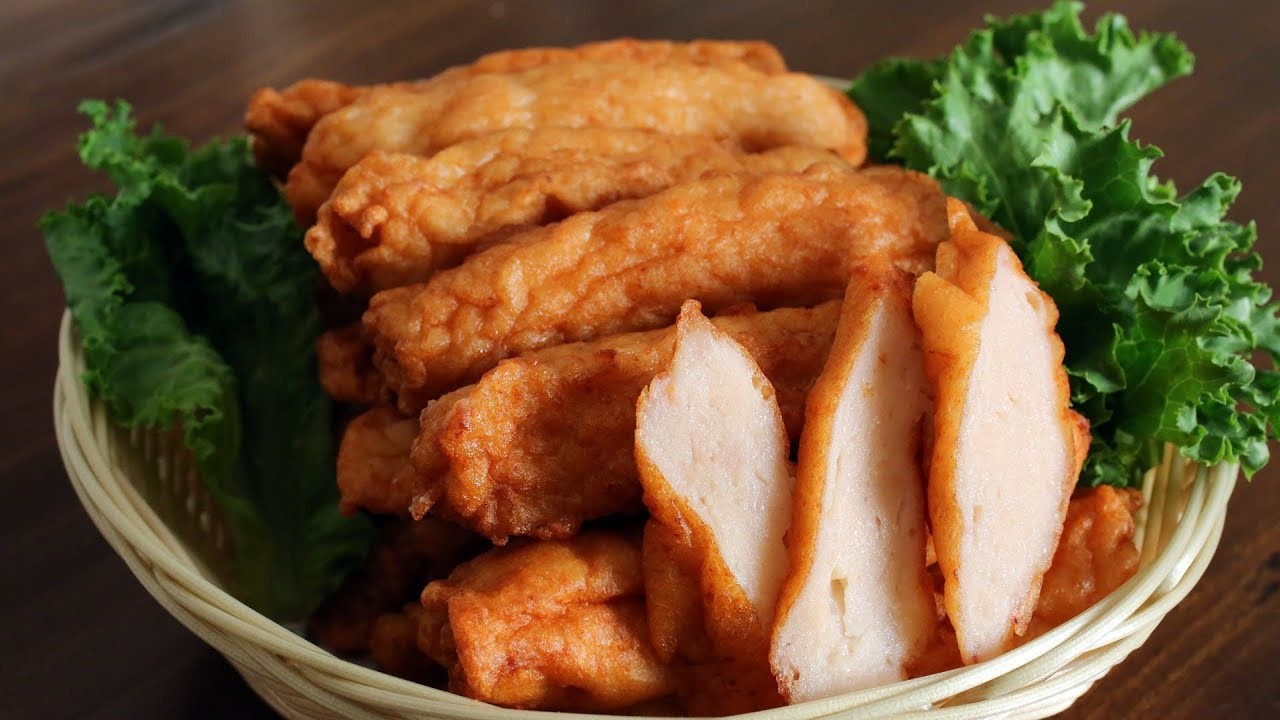 |
| Photo: Maangchi |
A fishcake (sometimes written as fish cake) is a culinary dish consisting of filleted fish or other seafood minced or ground, mixed with a starchy ingredient, and fried until golden.
Asian-style fishcakes usually contain fish with salt, water, flour and egg. They can include a combination of fish paste and surimi. European-style fishcakes are similar to a croquette, consisting of filleted fish or other seafood with potato patty, sometimes coated in breadcrumbs or batter. Fishcakes as defined in the Oxford Dictionary of Food and Nutrition are chopped or minced fish mixed with potato, egg and flour with seasonings of onions, peppers and sometimes herbs.
The fishcake has been seen as a way of using up leftovers that might otherwise be thrown away. In Mrs Beeton's 19th century publication Book of Household Management, her recipe for fishcakes calls for "leftover fish" and "cold potatoes". More modern recipes have added to the dish, suggesting ingredients such as smoked salmon and vegetables.
In South Korea, fishcakes are called eomuk (어묵) or odeng (오뎅), which is a loan word from the Japanese stew, oden). Fish cakes are mainly made of corvina or cuttlefish which contains less fat. This is because fatty fish are not suitable for making fishcakes. Salt, sugar, flour, and starch are necessary ingredients as well. Also, other ingredients may be added in order to make fishcakes: onions, carrots, green onions, and cooking wine. It is normal to add several chemicals in order to have a better flavor such as D-sorbitol (an artificial sweetener which has approximately 60% of the sweetness of sugar so that diabetic patients can consume), soy protein (protein extracted from soy which can make it possible to create a better texture of fish cakes with less amount of fish fillets), and D-xylose (a natural sweetener with low calories), or monosodium glutamate (MSG).
Usually made by deep-frying paste made from ground fish, eomuk can be boiled with other ingredients to make eomuk-tang (어묵탕; "fishcake soup") or eomuk-jeongol (어묵전골; "fishcake hot pot"), stir-fried to make eomuk-bokkeum (어묵볶음), and put in various dishes such as jjigae and gimbap.
Sold from street carts, eomuk can be boiled on a skewer in broth. The broth is sometimes provided to the customer in paper cups for dipping and drinking. Hot bar, also written as hotbar, is another version of eomuk sold during cold weather. While still served on a stick or skewer, the hot bar is deep-fried instead of boiled. In this form, the hot bar can be prepared according to any particular vendor's 'secret' recipe: plain, mixed with vegetables such as diced carrot or whole perilla leaf, or served with any number of sauces or condiments including ketchup and mustard. It often in broth with mul-tteok, which is long and salty rice cake.
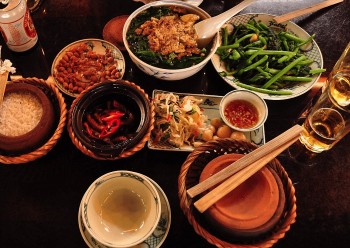 | A Local Guide for Da Nang's Best Cheap Restaurants The delicious local cuisine will pamper you during your stay in this city and release you from all the stress you might have. |
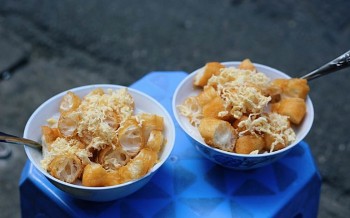 | Hot Snacks in Hanoi Winter The cold winter weather in the capital is the best time to enjoy hot snacks, from crispy pancakes to savory porridge. |
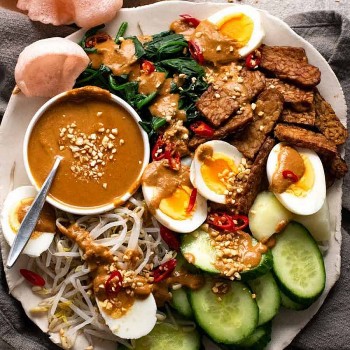 | What To Eat: The Must-Try Appetizing Dishes To Try In Bali Bali, beautiful land with white sandy beaches and cultural sites that attract many tourists from over the world, has its unique and distinctive traditional cuisine, ... |
Recommended
 Travel
Travel
Vietnam Through Australian Eyes: Land of Flavor, Warmth, and Timeless Charm
 Travel
Travel
Strategies for Sustainable Growth of Vietnam’s Tourism from International Markets
 Travel
Travel
Vietnam Strengthens Its Presence On The Global Tourism Map
 Multimedia
Multimedia
Phong Nha-Ke Bang National Park Named Top Adventure Travel Site
Popular article
 Travel
Travel
Vietnam Welcomes Record-High Number of International Visitors
 Travel
Travel
Luxury Train From Hanoi To Hai Phong To Be Launched In May
 Travel
Travel
Phong Nha Named Top Budget-Friendly Travel Destination for Spring 2025: Agoda
 Travel
Travel





